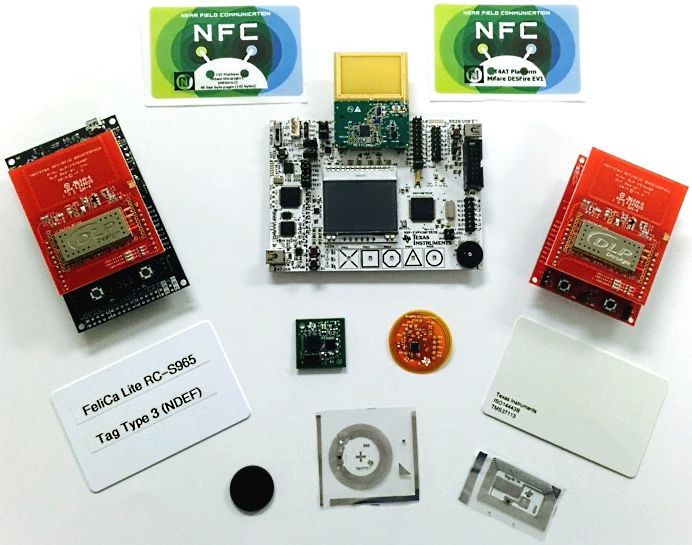SLOA227B October 2015 – March 2019 TRF7964A , TRF7964A , TRF7970A , TRF7970A
-
NFC/HF RFID reader/writer using the TRF7970A
- Trademarks
- 1 Terms, Definitions, and Symbols
- 2 Introduction
- 3 Initial RF Collision
- 4 TRF7970A Register Settings
- 5 Reader/Writer Mode
- 6 Hardware Description
- 7 Reader/Writer Firmware Example
- 8 Quick Start Guide
- 9 Operational Overview
- 10 Reader/Writer Interoperability Results
- 11 Conclusion
- 12 References
- Revision History
NFC/HF RFID reader/writer using the TRF7970A
The Near Field Communication (NFC) market is emerging into multiple fields including medical, consumer, retail, industrial, automotive, and smart grid. Reader/Writer is one of the three operational modes supported by the TRF7970A. When using reader/writer mode the user can configure the TRF7970A to read Type 2, Type 3, Type 4A, Type 4B, and Type 5 tag platforms, also called transponders. The tags can store NFC Data Exchange Format (NDEF) messages or proprietary defined data.
This application report describes the fundamental concepts of reader/writer mode and how to properly configure the TRF7907A transceiver for each supported technology. Furthermore, it describes how to successfully activate, select, and read or write supported tags.
This application report and example firmware focuses on examples where the user presents only one tag at a time. However, it is possible from both a hardware and firmware standpoint to read multiple tags at the same time.
For applications that use only reader/writer mode, the TRF7964A can be used as a drop-in alternative to the TRF7970A.
Sample code described in this document can downloaded from http://www.ti.com/lit/zip/sloa227.
